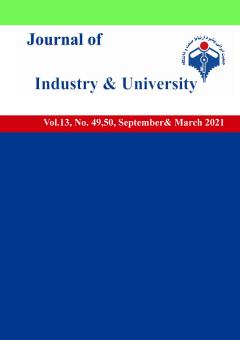-
-
List of Articles
-
Open Access Article
1 - Familiarity with open innovation and review of effective factors in its implementation and development
sattar hashemi -
Open Access Article
2 - Comparative study of future industrial development plans of three countries: Japan, India and Malaysia
Mohammad reza Karimi ghohroudi masoud shafiee maryam rezaei ghahroodi -
Open Access Article
3 - The Fourth Industrial Revolution or the New Renaissance? Review focusing on the role of the media
dariush mahjoobi -
Open Access Article
4 - Designing model strategic management of technical and vocational training
davood farrokhi Hasan Shahrakipour Samad Karimzadeh -
Open Access Article
5 - Science in the next 75 years, guidelines for Iran
reza mansouri -
Open Access Article
6 - Obstacles to achieving inclusive growth due to the inefficiency of the technical-executive system of the country
abolfazl mirghasemi -
Open Access Article
7 - Investigating the Impact of Knowledge Characteristics on Green Innovation with Mediating Role of Knowledge Management Strategies (Companies active in Khorramabad industrial towns)
Amir Ghafourian Shagardi Seyed Najmeddin mousavi Ali shariatNajade -
Open Access Article
8 - The application of innovation ecotone theory to modify the structure of Iran's innovation ecosystem
nasrin bigdelou hamid zare seied sepehr ghazinori -
Open Access Article
9 - Evaluating the Impact of Economic Performance of Relief Committee on Social Justice
mohammad javad adalamchehreh Seyed Ataollah Sinaee khodayar mortazavia mostafa taghavi -
Open Access Article
10 - Empowering students' mathematical learning with a network analysis approach based on Dimtel
Mohammad Alipour Fathkouhi mohammad hassan behzad Hamid Rasouli Ahmad Shahvarani Semnani -
Open Access Article
11 - Presenting a conceptual framework for the development of the technological capability of technological universities of the Islamic Republic of Iran
SAEED bakhtiari Mohammadreza HassaniAhangar Mahdi Fatehrad MohammadAli Barzenooni Reza Naghizade -
Open Access Article
12 - Impact of Export and Trade Performance on Organizational Strategies (Case Study: Quds Razavi Bread Company)
Omid Behboodi Maryam Ashjaei Arash Apornak
-
The rights to this website are owned by the Raimag Press Management System.
Copyright © 2017-2026







